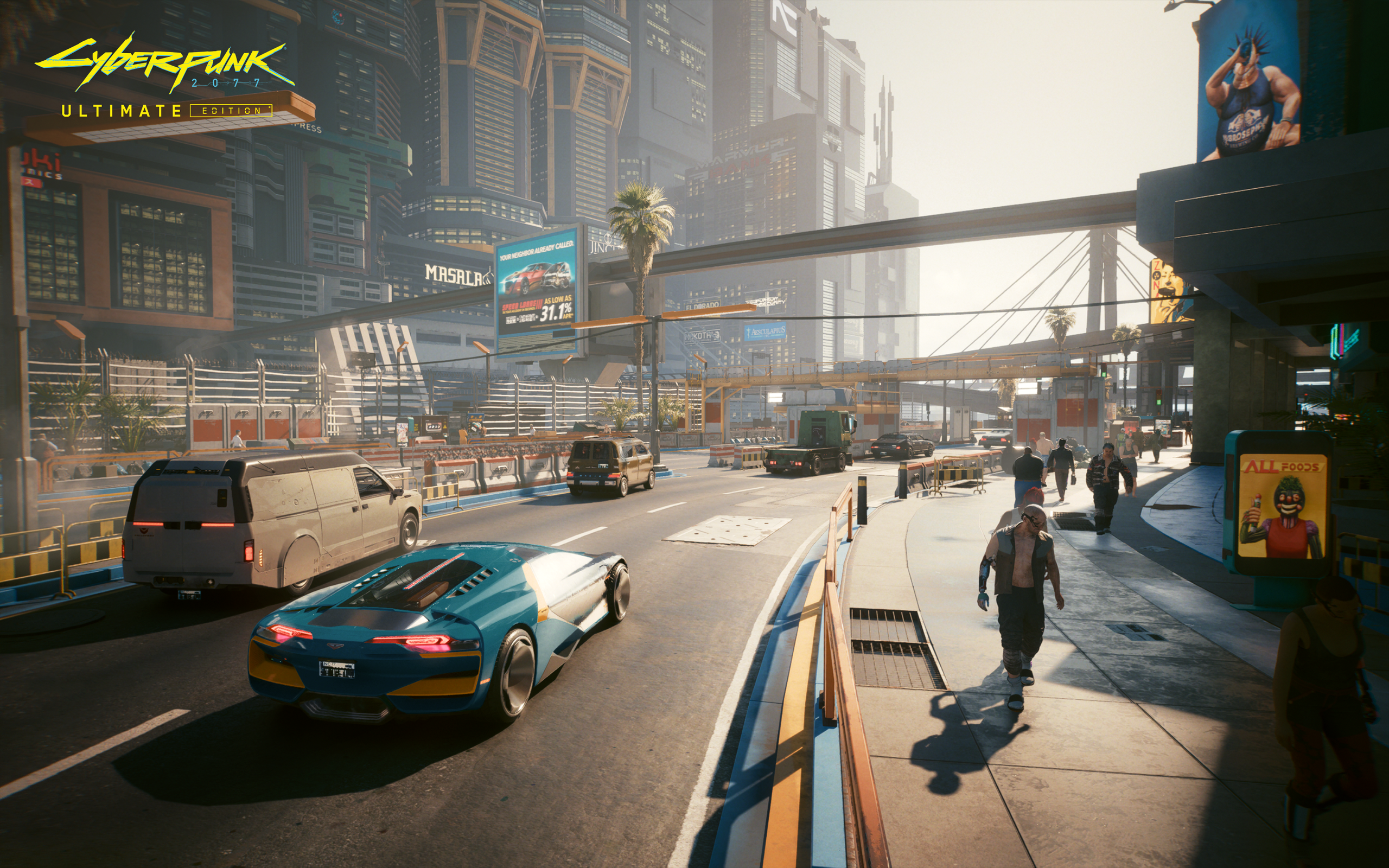Hitting a 4070m’s performance isn’t bad, but ideally the M4 Max should perform around a 4080m (and in Blender the full M4 Max is better than the 4080m). Pity ray tracing performance is even worse.It’s a few days after release, so I thought it would be good to look at some of the scores for Cyberpunk 2077 to see how things compare with Windows and also GPTK. Except….
There seems to be a bug/misconfiguration in the Mac version of the game. I first read about it on Reddit. It seems that whatever preset is chosen (except the “For this Mac” ones), the setting for Screen Space Reflections (SSR) is +1 on the Mac. So the Ultra preset has a SSR setting of Ultra on Windows, but “Psycho” on macOS. Whoops! Unfortunately Ultra -> Psycho is massive drop in performance. I tried a variety of resolution at ultra both with and without the correct setting for SSR.
Setting SSR = “Psycho" SSR = Ultra Percentage change. 4K Ultra 9.15 14.04 53% 1440p Ultra 21.07 30.87 47% 1080p Ultra 37.03 49.94 35% 720p Ultra 70.21 85.31 22%
These figures are from a M4 Pro (20 core gpu). I think we can see that if not for this bug, early performance reviews would be much better. I don’t have a M4 Max, but I would imagine it would perform like a 4070m, rather than around a 4060m as it currently does. Not bad I suppose, not great either.
Ray tracing is another matter. The performance is bad. This above bug exists in RT presets as well. In fact all RT presets have SSR set at “Psycho”. My machine is too slow to notice a difference with or without an incorrect SSR setting.
I am very curious why the M3/M4 machines do pretty well on Blender/Cinebench R24, but so poorly on Assassins Creed Shadows and Cyberpunk 2077 in terms of RT. Can it just be optimization? Apple helped quite a bit with this port, so that seems unlikely.
As for why games perform worse than Blender … I dunno. The following is pure conjecture: Maybe it has to do with the fact many AAA games tend to break graphics APIs for pure performance and game specific drivers are needed to enable those performance hacks. If Apple doesn’t do that or enable those kinds of hacks, then performance suffers.
Hardware isn’t everything, drivers are often the secret sauce of performance. It has to be noted Blender is an outlier amongst renderers the other way. But that’s probably software optimization, the other key ingredient as you pointed out.

